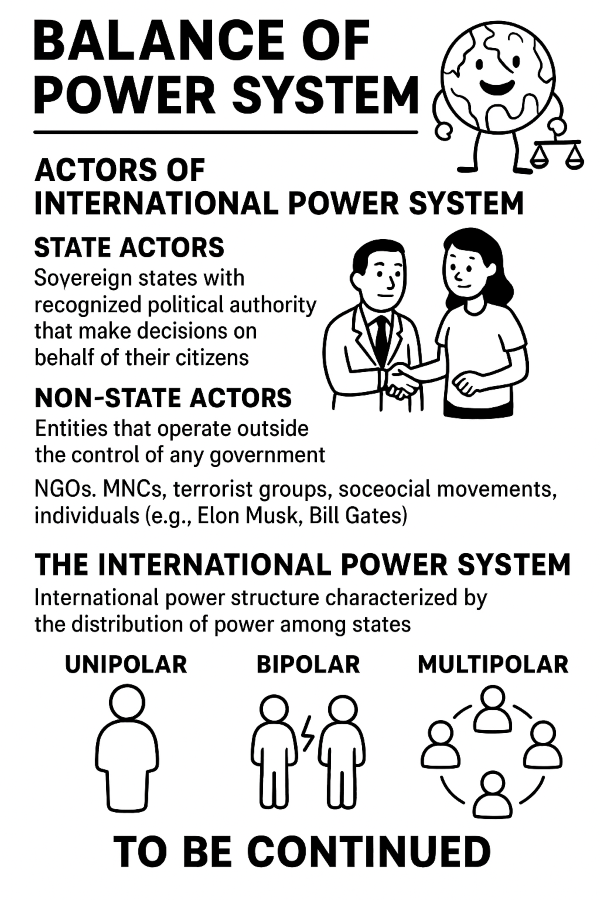Navigating Sri Lanka’s Perpetual Flood Crisis-by Naalir Jamaldeen
Source:Ceylontoday
Despite the country having witnessed many disasters in the past accompanied by heavy rainfall during the South-west, North-east and inter-monsoon seasons, it seems no proper action has been taken so far to avert such situations. It is a pressing issue, as it directly impacts human life and livelihoods as well. Developing resilience against such natural disasters is the need of the hour.
Many areas beyond the vulnerable zones, in addition to typically identified flood-prone zones, also face the threat of inundation even during light rains. It is imperative to find out the root cause, whether it occurs due to human activities or naturally. Then, a long-lasting solution can be provided for this issue. If it is left as it is, the consequences will be dire.
Senior Meteorologist Malith Fernando said, “Sri Lanka has four distinct rainy seasons such as South-west, North-east and first inter-monsoon and second inter-monsoon seasons in October and early November. We will have inherent rainfall according to those monsoon seasons.”
In addition, in the past few days, most parts of the country experienced showers and thundershowers due to the development of an “Intertropical Convergence Zone” in the Bay of Bengal near Sri Lanka. An atmospheric disturbance accompanied the rainfall and was worse than expected.
Heavy showers above 200 millimetres had been reported on 10 October and the next day it was 150 millimetres. On 12 October, rainfall reduced to even below 70 millimetres, according to Senior Meteorologist Fernando.
Fernando said, “Most likely, an environment for the inter-monsoon season is expected to develop by next week and showers or thundershowers can be expected in the evening and night as a result.”
Cause and nature of rainfall
Fernando said, “The atmosphere will show different signs before the rains. Towering cumulus clouds, shelf clouds, cloud movement, drastic temperature changes and sudden wind changes are the common signs of rain. Different monsoons will show different signs but these are the primary signs of rainfall, be it North-east or South-west or two inter-monsoons in the middle of these seasons. However, the same nature or impact can’t be expected from all of them.”
He said, “Sometimes, instant rains can be expected following strong sunlight unexpectedly. The atmospheric changes taking place in the Bay of Bengal directly influence the weather pattern of Sri Lanka. Even a small change would result in the country’s climate or weather pattern changing. When the atmospheric disturbance develops further in the Bay of Bengal, it will be in full swing by absorbing the energy from the outer source. The country’s wind system will become stronger simultaneously. The wind velocity towards the Bay of Bengal blowing through the Central Hills of this country will become stronger. These are the primary causes for the increase of wind velocity across the Central Hills and neighbouring areas.”
The Senior Meteorologist said, “These windy conditions will last for some days and won’t stop in one or two days. Depending on the atmospheric disturbance persisting in the Bay of Bengal, the changes to take place in the country’s weather system can be anticipated. The potential for heavy rains will be high if the atmospheric disturbance in the Bay of Bengal is high or remains at the highest level.”
Radiation cooling
The process of the earth’s surface cooling at night is called radiation cooling and this results in a fall in temperature at night. As there will be no energy from the solar system, the ground will continue to radiate the heat away and its temperature will fall as a result. The night-time cooling is called “Radiation Cooling.”
This situation will result in the formation of clouds and will trigger heavy rainfall, especially thunderstorms. The next aspect to be concentrated on is the formation of “Convective Clouds.” It will look like cotton balls. The warm air may rise through the cool air surrounding the atmosphere. This is a different system being developed in the atmosphere. According to different characteristics, the formation of rainy clouds differs. This applies to all four monsoons in Sri Lanka.
There are several factors influencing the rainfall in Sri Lanka. It is known as “dominant factors.” Actually, the low-pressure zone developing in the Bay of Bengal is also one of the primary factors which exert influence on the country’s weather patterns. By analysing the situation report of the Bay of Bengal, it will be able to predict whether Sri Lanka will experience showers or not.
North-east monsoon
The North-east (NE) monsoon season will start in November this year and will last until February. A part of the country will experience heavy rainfall during this period which will result in floods and disasters. The probability of flash floods, river floods and strong winds is high during this period.
Riyas said, “The possibility for property damage and loss of life is high during the North-east monsoon due to the water-induced disaster, especially floods. A concerted and unified effort from the government and private sector institutions at all three phases such as pre-disaster, during and after a disaster to mitigate the effects of NE monsoon disasters is needed. Therefore, the Sri Lanka Disaster Resource Network (SLDRN) will be activated to respond to the North-east monsoon and respond to it expeditiously.”
Preparations in Ampara District
Meanwhile, Ampara District Secretary Chinthaka Abeywickrama said, he has alerted the relevant stakeholders in the district to respond to any disasters during the North-east monsoon.
Assistant Director of Disaster Management Centre (DMC) for Ampara District M.A.C.M. Riyas said, Ampara District Secretary Abeywickrama also instructed to strengthen the Disaster Management Response Committee at the institutional level, reorganise the Grama Niladhari (GN) Division level disaster management committee and sub-committee, conduct the training and awareness programmes for stakeholders and the public, strengthen early warning mechanism and last mile dissemination to vulnerable communities, preparation of North-east Monsoon Emergency Operation and Response Plan, establish the Emergency Operation Centre at the institutional level to function round the clock, cutting and removing trees vulnerable to collapse in public places, strengthen flood fighting and rescue operation teams for the emergency and to conduct the flood or urban fire simulation exercises in high-risk areas through multi-stakeholders.
Riyas added that the Secretary, Ministry of Defence, Director General, DMC have also been notified regarding the plans to be put in place during the North-east monsoon to respond to any disaster.
President’s instructions
President Anura Kumara Dissanayake also emphasised the necessity for the implementation of an urgent and standard programme and proper mechanism to prevent frequent floods. This follows a discussion between the President and the Finance Minister and Ministry officials held at the Presidential Secretariat to discuss disasters in the country due to the adverse weather conditions.
President Dissanayake has also instructed the Finance Ministry officials to put in place necessary arrangements to renovate the properties damaged due to the persistent disasters. Notably, the President has instructed the relevant officials to investigate the problems of the people and to provide them with compensation for the properties which were damaged during the floods and were not renovated.
Disaster situation
The persistent inclement weather conditions accompanied by the formation of an intertropical convergence zone and an atmospheric disturbance in the vicinity of Sri Lanka had wreaked havoc in 95 Divisional Secretariat (DS) divisions across 13 districts, affecting a total of 40,922 families comprising 160,098 members, resulting in three deaths and leaving two people injured.
Colombo, Gampaha, Puttalam and Kalutara had been badly affected. The government had allocated Rs 33 million to those districts through respective District Secretaries. A total sum of Rs 84 million had been allocated to other districts to carry out relief works. An additional sum of Rs 60 million had been kept on standby to be utilised, if required, according to P.D. Dharmatilake, Additional Secretary at the Disaster Management Unit of the Defence Ministry.
Assistant Director of Media and Public Relations at the DMC Janaka Handunpathiraja confirmed that “Out of the total number of affected families, the highest number of 20,553 families comprising 82,839 members, 15,941 families comprising 60,233 members and 2,302 families comprising 9,222 members affected due to flash-floods had been reported from the Gampaha, Colombo and Puttalam Districts, respectively.”
He said that a total of 2,222 families comprising 9,591 members were displaced from their homes due to flash floods and had been housed in 70 safety centres providing them with cooked foods and other essentials, while 76 families comprising 239 members had been staying with relatives and friends. The highest number of 41 safety centres had been set up in Colombo District, alone where 1,326 families comprising 5,509 members had been accommodated.
Elaborating on the persistent disasters, Handunpathiraja said, due to flash floods, 407 houses had been partially damaged in these districts and the highest number of 153 had been reported from Kegalle District. A house in Kegalle DS Division had been reported as fully damaged accompanied by the collapse of a huge tree on it.
DMC’s public awareness programmes
Acting Director General (DG) at the DMC Adeepa Tilakaratne said, the landslide was the only disaster from which the highest death toll was reported. The NBRO took necessary action to reduce the deaths caused by landslides. The NBRO has succeeded in its efforts after 2017. The deaths from landslides have dropped greatly now. This was possible because the public cooperated with the NBRO by following proper guidelines and instructions and implementing the government machinery perfectly. The cooperation of the public is imperative in the NBRO’s efforts to minimise deaths from landslides.
He said, “The DMC, through its 25 centres across the country, conducts public awareness programmes using different mechanisms, continually such as what is meant by disaster, what are the immediate measures to be taken, how to evacuate from disaster locations. Disaster committees have been established and shared by respective Grama Niladharis in the disaster-prone areas. A huge sum of money is being spent for this purpose every year. Thus, it has been able to reduce the death toll to three from 27 within a short span. It was due to negligence to follow the proper guidelines.”
The DMC has initiated a programme to minimise the disasters. If it is unable to minimise the disasters, necessary arrangements will be made to safeguard the residents from disaster-prone areas, if any disaster occurs there, according to DMC’s Acting DG.
Reducing landslide risk
A single methodology is not sufficient to reduce the landslide risk. Various stages are involved in the process of reducing the landslide risk. The decision on whether to mitigate the high-risk landslide location or relocate the residents to a safe place will be taken based on the burden caused to the economy by implementing the project. If the mitigation expense remains at the highest level, steps will be taken to relocate them, according to Laksiri Indratilake, Senior Geologist at the Landslide Research and Risk Management Division of the National Building Research Organisation (NBRO).
Sri Lanka is not wealthy enough to pump a huge sum of money to mitigate every identified landslide-prone location in the country. Due to this, the government concentrates on the concept of relocating the residents to safe locations from highly vulnerable landslide-prone areas. However, there are some exceptions. Then necessary arrangements will be put in place to mitigate the same location, even though the expense is high. The landslide-prone locations can be divided into three categories such as low, medium and high-risk locations, he said.
Indratilake said, “Multiple highly vulnerable landslide-prone locations have been identified in Badulla, Nuwara-Eliya, Kandy, Matale, Kegalle and Ratnapura Districts. In addition, there are a significant number of such locations in the Kalutara, Galle, Matara, Hambantota, Moneragala, Kurunegala, Gampaha and Colombo Districts.”
Landslide early warnings
Director at the Landslide Research Division of NBRO Gamini Jayatissa said, “Landslide early warning alerts had been issued to eight districts across the Central Hill Country and the neighbouring districts. Colombo, Gampaha, Kalutara, Galle, Kurunegala, Kegalle, Ratnapura and Nuwara-Eliya Districts were among them.”
Jayatissa said, “The lowest number of landslide incidents had been reported to them from these districts. It was very low when compared with the previous years’ incidents. A total number of 40 minor landslide incidents had been reported from various districts coming under the landslide-prone zone. Following these incidents, required guidelines and guidance have been given to the residents in respective areas by NBRO through respective channels.”
He said, “In addition to the natural landslides, cutting failures have become a great issue and risk which should be attended to and addressed as soon as possible. It represents a large portion of the total landslide-related incidents. Implementation of improper methodologies during the construction of houses or other structures will lead to cutting failures eventually. The residents in such areas have been advised to adopt the precautionary guidelines by the NBRO perfectly.”
Placing automated rain gauges
A total of 330 automated rain gauges have been installed across the landslide-prone areas linked with the NBRO Headquarters in Colombo. Real-time rainfall is measured by those devices. Landslide early warnings will be automatically issued based on rainfall in a particular area. Consequently, the NBRO has been able to issue accurate and on-time landslide warnings to residents in the landslide-prone areas across the Central Hill Country and the neighbouring districts. The NBRO also advises those residents to act in accordance with its instructions and then loss of life caused by any landslide incidents can be averted.
When the rainfall surpasses 150 millimetres in landslide-prone areas, the NBRO will issue evacuation level red watch landslide early warning alerts to those areas. In the event of the automated rain gauges malfunctioning due to technical errors, the local community has been asked to monitor the individual rain gauges being given to them and to go for the next stage taking the level of rainwater accumulated in those devices. The NBRO also provides technical guidelines while implementing housing construction or other projects in hilly areas.

























